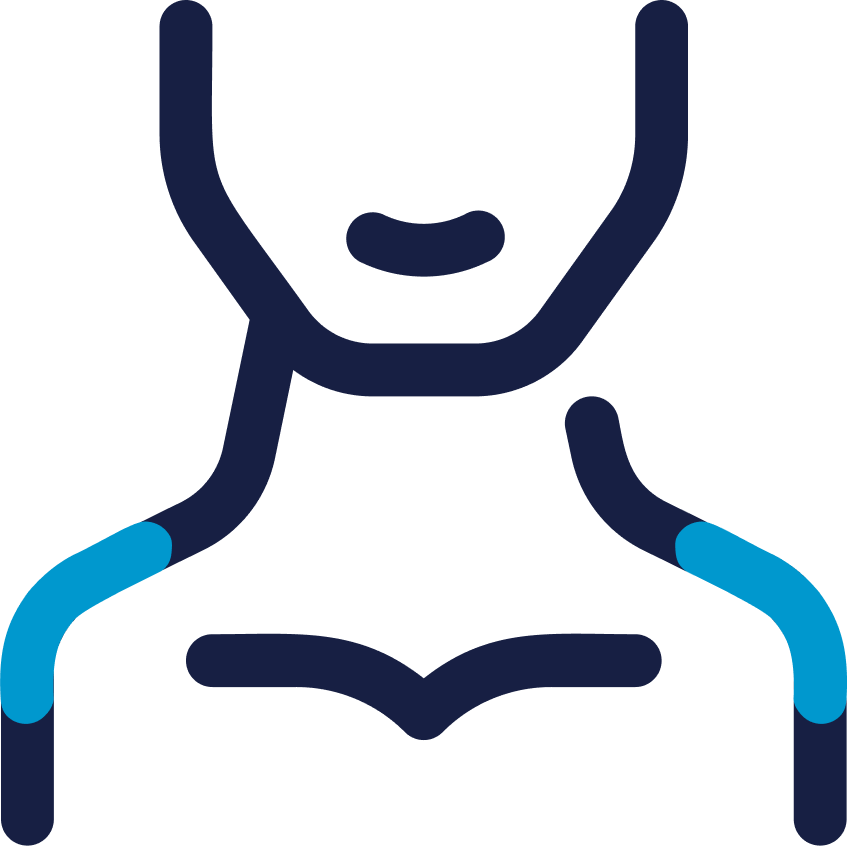
- Specialty Procedures
- /Shoulder

Each year, approximately 50,000 people in the United States undergo shoulder replacement surgery. Total shoulder replacement is also referred to as shoulder arthroplasty: This procedure involves using artificial devices to replace damaged bones and arthritic joint surfaces. It is crucial that individuals who are considering shoulder arthroplasty choose an experienced and skilled Board Certified Orthopedic Surgeon.
Due to the shoulder’s extraordinary range of motion, it is an amazing piece of the human body. The shoulder’s incredible range stems from its internal construction. The shoulder consists of the clavicle (collarbone), scapula (shoulder blade) and the humerus (upper arm bone). All three of these bones join to form the shoulder joint. The humeral head (upper arm bone) fits perfectly into the socket of the glenoid (scapula bone), once these two bones are joined, this part of the shoulder is commonly referred to as the ‘ball-and-socket’ joint. The ball-and-socket joint allows the shoulder’s wide-ranging motion. The cartilage in the shoulder is essentially a smooth cushion that allows for easy and painless movement of the shoulder.
As time passes, the ball-and-socket joint degenerates. This degeneration frequently occurs due to arthritis or a shoulder fracture, both of which cause the smooth surfaces of the cartilage to become rough. The bones in the shoulder begin to rub against one another, resulting in pain. In the event that conservative treatments fail, your physician may recommend surgical intervention as a means to reduce the patient’s pain and restore or improve his/her range of motion.
You may benefit from total should replacement surgery if you have:
Typically, during a total shoulder replacement surgery the patient’s arthritic joint surfaces are replaced with a plastic socket and smooth metal ball with an attached stem. These mechanisms are available in a variety of sizes and may be cemented or ‘press fit’ into the patient’s bone.
The ‘press fit’ technique is utilized when the patient’s humeral bone is solid; however, if this bone is soft, the humeral component may be implanted using bone cement. In the majority of cases, a plastic socket (glenoid) is implanted using bone cement. Using a glenoid component (plastic socket) is not recommended if the:
An individual who has bone-on-bone osteoarthritis with intact rotator cuff tendons is usually a good candidate for a conventional total shoulder replacement surgery. Although there are other shoulder procedures that can be performed (i.e., resurfacing hemiarthroplasty and stemmed hemiarthroplasty) studies indicate that individuals with osteoarthritis receive the most benefits from a total shoulder arthroplasty procedure, as opposed to the other procedures available.
If shoulder replacement surgery is determined to be the best treatment option, individuals need to prepare for their recovery. Dr. O’Grady will clean out the damaged joint and fit the prosthetic pieces during the procedure; however, patients need to commit to abiding by their follow-up care instructions and physical therapy program to ensure a proper recovery.
Patients should plan ahead for their at-home recovery by:
Each patient is unique; therefore, his or her post-surgery experience is too, however, the basic timeline below provides patients with an overview of recovery following a total shoulder replacement surgery with Dr. O’Grady. What to expect directly after surgery:
Patients who do stay in the hospital will be given exercises to perform to:
Patients receive pain medication, aspirin to prevent blood clots and anti-inflammatory medicine to decrease swelling. Dr. O’Grady recommends that his patients only take the pain medication when they are experiencing pain. Dr. O’Grady will determine when the patient is ready to head home. Typically, patients who remain in the hospital can move well enough to head home within two days

